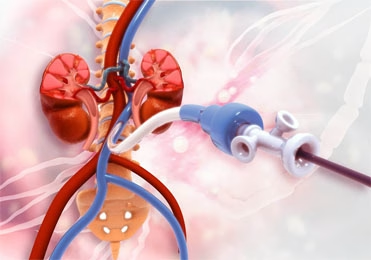Role of nephrologists in Diagnostic Angiography and Angioplasty
The Nephrologist’s Role in Diagnostic Angiography and Angioplasty
Advanced Interventions for Renal Vascular Disorders
Clinical Relevance of Angiography in Nephrology
Nephrologists play a vital role when vascular issues affect kidney function. Conditions like Renal Artery Stenosis, resistant hypertension, and chronic kidney disease (CKD) often require diagnostic angiography to assess blood flow to the kidneys. If a blockage is found, angioplasty with or without stenting may be performed to restore adequate blood supply and preserve renal function.

Indications for Renal Vascular Imaging
- Uncontrolled or resistant hypertension despite medications.
- Worsening kidney function with suspected renal artery narrowing.
- Unexplained kidney size asymmetry or atrophy on ultrasound.
- Flash pulmonary edema suggestive of bilateral renal artery stenosis.
Nephrologist’s Involvement in the Interventional Workflow
- Pre-Procedural Evaluation: Identifying patients who may benefit from vascular imaging based on clinical and imaging findings.
- Interdisciplinary Collaboration: Coordinating with interventional radiologists or cardiologists for the actual procedure.
- Risk Assessment: Evaluating risks such as contrast-induced nephropathy, especially in CKD patients.
- Post-Procedural Monitoring: Tracking renal function, blood pressure, and long-term outcomes post-angioplasty or stenting.
Renal Artery Angioplasty: Procedure Overview
Renal Angioplasty involves inserting a catheter into the femoral or radial artery and advancing it to the renal arteries. A balloon is inflated at the site of narrowing to widen the artery. In many cases, a stent is also placed to maintain vessel patency. The goal is to improve renal perfusion, control blood pressure, and prevent further kidney damage.
Potential Complications in Renal Patients
- Contrast-Induced Nephropathy: Temporary or permanent kidney function decline due to iodinated contrast dye.
- Atheroembolic Disease: Dislodging of cholesterol plaques can worsen kidney function.
- Stent Restenosis: The artery may narrow again, requiring close follow-up.
Therapeutic Benefits of Timely Intervention
- Improved blood pressure control with fewer medications.
- Stabilization or improvement of renal function.
- Reduced cardiovascular risk associated with uncontrolled hypertension.
Summary and Clinical Takeaway
Nephrologists play a central role in diagnosing and guiding treatment for vascular causes of kidney dysfunction. Diagnostic angiography and angioplasty can be life-changing interventions when used judiciously in the right patient population. Close collaboration with vascular specialists ensures optimal outcomes for kidney health.
Connect with Our Nephrology Experts to determine if vascular imaging or angioplasty may be appropriate for your condition.
Contact Our Nephrology Expert
Email: dirnephro@gmail.com
For Appointments Contact: Coordinator at +91 9599471244

Prof (Dr) D Mukherjee is an alumnus of the prestigious Armed Forces Medical College, Pune where he did his MBBS & MD (Medicine). Subsequently he went on to do his DM (Nephrology) from PGIMER Chandigarh, which is the foremost training institution for nephrology in India.